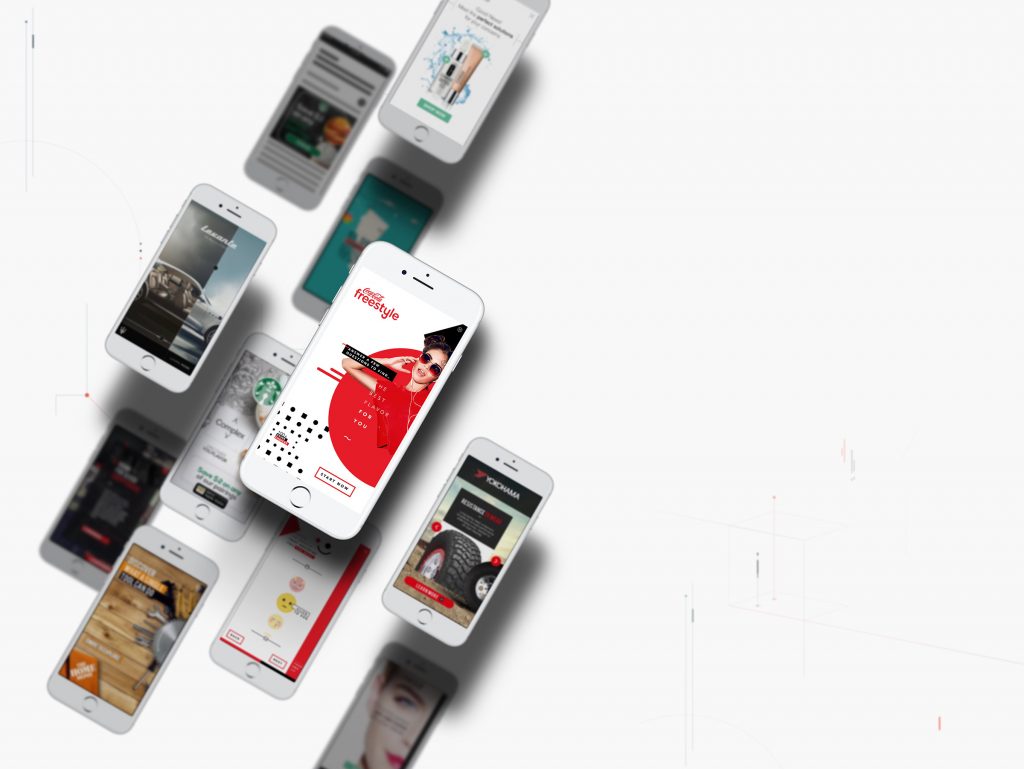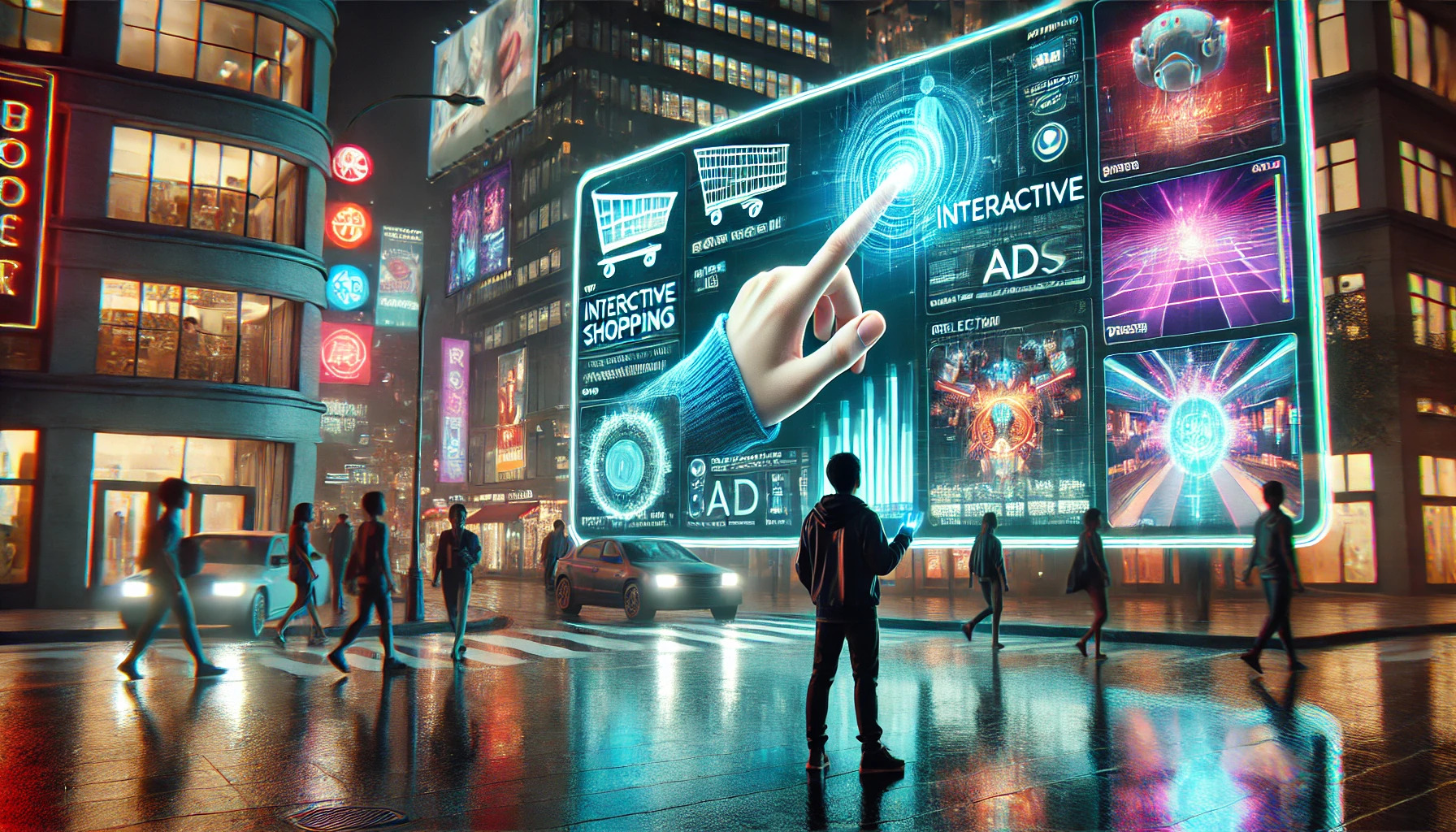Businesses must create attention-grabbing strategies to effectively engage online users and achieve successful outcomes. Marketers must use innovative strategies since modern consumers face overwhelming daily information, making static techniques less effective. Making an impact in the digital world is vital. Marketing must employ creative and customized strategies to reach out to and satisfy the particular needs of their audience with Interactive Ads.
In 2025, companies will prioritize interactive technology to engage audiences through creative methods, enhancing their content strategies. Interactive Ads leads in this direction, transforming passive customers into active users. This change highlights rapid technological advancements and a deeper understanding of consumer behavior to foster meaningful interactions.
The evolution of content delivery isn’t just about accepting technological advances. Brands must align with consumer expectations to deliver engaging experiences, transforming audience interaction.
This article examines interactive advertisements, their impact, and strategies that effectively capture viewers’ attention.
We’ll discuss making interactive ads powerful tools for brands to build stronger, connected relationships with their customers.
What is Interactive Advertising
Interactive advertising actively encourages consumers to participate, transforming passive ad viewing into an engaging dialogue between businesses and their audience. This approach contrasts with static ads, where brand communication with customers is restricted. Through involving the audience, the interactive ads facilitate an exchange between the audience that improves the level of engagement and helps in branding memory. Studies show that interactive formats can increase the percentage of conversions compared with static ads.
At its heart the term “interactive advertising” refers to all forms of advertising that promote the user to engage beyond simply browsing.
The interactions could range from simple actions like swipes and clicking to more advanced actions like virtual realities, voice-controlled commands, and interactive games. These types aim to provide a more appealing and customized experience, creating a more enduring relationship between the customer and the brand.
Why Use Interactive Ads?
Interactive Ads serves a variety of objectives beyond simply showing off a particular product or service. It not only displays your services or products but it significantly increases the interaction with customers. Through interactive elements, advertisements are essential in increasing brand recall and ensuring your message resonates with customers. Additionally, interactive ads provide valuable insights into the behavior of consumers. Analyzing user interactions helps advertisers identify patterns, address pain points, and optimize future ads for greater effectiveness and engagement. The aim is to deliver a personalized, impactful brand experience that captures attention, fosters loyalty, and maximizes conversion efficiency. Through interactive ads, marketers can efficiently communicate with their customers by making each connection count towards strengthening customer relationships.
How Interactive Advertising Fosters Engagement
Interactive ads can engage customers better by implementing various crucial strategies that improve users’ experience, making the experience memorable and fun.
Strategies for Interactive Ads :
Personalization
Through the use of information from users, interactive advertisements modify their content so that they are in tune with the preferences of each user’s behaviours and preferences. Personalized ads capture attention and boost user engagement by delivering more relevant and appealing content. Most advertisers believe personalized content allows them to differentiate themselves from their competitors.
Engaging
Through Action ads go beyond just watching by encouraging viewers to act by tapping, swiping, or responding to questions. The active engagement of users is not just a way to keep people interested for longer but can also help to create a lasting impression.
Gamification
By incorporating elements of play like games, challenges, and rewards, make interacting with advertisements a pleasurable experience. The gamification approach taps into the users who love competition and playing, resulting in more interaction with ad-related content. Performoo is particularly effective in utilizing this strategy, having nearly 96% of those who begin quizzes with us complete the quiz.
Instant Rewards
Providing immediate rewards or feedback upon engaging with advertisements like discount coupons or exclusive content can provide the best incentive for interaction. The satisfaction from interacting with ads makes users want to engage with the advertisement and the company behind it.
Dynamic Storytelling
Interactive advertisements allow brands to present their tales in a manner that’s more captivating and engaging. Companies can make a more robust, powerful, and emotional bond by bringing the viewer into the story. Nearly 70% of marketers believe combining interactive content with other formats boosts content retention.
Immersing the Senses
Using audio, video, and augmented reality, these ads engage multiple senses, creating deeper, more exciting experiences than static visual ads.
Promoting Social Interaction
Due to their interactive nature, interactive advertisements are posted on social media, increasing their reach and efficiency. This does not just increase the impact of an ad but increases the level of social approval.
Popular Interactive Advertising Formats
Suppose you are using interactive ads to attract audiences. In that case, advertisers can choose from various choices available, all created to create a stronger relationship and inspire an active involvement from the consumer. Innovative formats, from playable ads to AR experiences, revolutionize brand communication, creating relevant and memorable customer interactions. We’ll look at some of the most well-known digital advertising strategies that dramatically enhance your brand’s story and increase engagement with your audience.
Playable Ads
Playable advertisements, explicitly designed to be played on mobile devices and games, combine entertainment and branding discovery. The ads engage the users with games or quizzes highlighting specific product features or helping them find the right product, including makeup suitable for particular skin types. The format turns advertising into a memorable, interactive experience.

Augmented Reality (AR) Ads
AR-based ads combine real-world and digital elements to deliver an engaging and immersive experience. Whether it’s virtual trying at fashion pieces or setting up furniture inside your home using virtual reality, these advertisements offer engaging and personalized interactions. The features such as AR filters and promotions based on location enhance the quality of users’ experiences.

360-Degree Video Ads
360-degree video content lets viewers explore every angle, creating a fully interactive and dynamic video experience. It is an excellent format for virtual tours, presentations of products, as well as stories, offering a complete and captivating view of the products the brands can present. This format is a unique approach to telling stories and showing off the products.

Chatbots and Conversational Ads
Using AI chatbots or chat ads mimics honest conversations by providing personalized recommendations and answering queries within the advertisement. They can also host quizzes and competitions, which add fun and promote products and services. The approach transforms advertisements into engaging and interactive conversations.

Interactive Social Media
Social Media Ads that are interactive use tools on the platform to connect with people directly through surveys, polls, and user-generated content. They promote active participation like clicking, posting comments and sharing, which increases the engagement of communities. Live Q&A-style sessions in these advertisements further encourage live interactions.

Rich Media Ads
Rich media advertisements include advanced options like audio, video, and other interactivity elements beyond traditional banner advertisements. With features like expanded banners, interstitial ads, and carousel adverts, They provide an exciting and dynamic experience, encouraging users to interact with the ads and to learn more about the company’s brand.

How to Make Your Ads More Interactive
To increase the effectiveness of ads, it is a blend of innovation, creativity, cutting-edge technology, and a deep knowledge of the audience you want to reach. For this to be achieved, you should consider these strategies:
Cutting-edge technology: Adopt augmented Reality (AR) as well as VR (VR) and artificial intelligence (AI) to create engaging experiences that grab the attention of your viewers.
Include Interactive Storytelling: Transform advertisements into compelling narratives, allowing viewers to pick their path or the outcomes. This is not just a way to increase the engagement level but also enhances the emotions.
Gamification to Engage Customers: Use game elements to engage and entertain in more relevant interactions with your company.
Create User-Generated Content: It will inspire your users to create their own content or participate in competitions, building an active community cantered around your company’s image..
By focusing on these tactics you can design interactive advertisements that go beyond grabbing the attention of their viewers. They can also create meaningful, long-lasting interactions with their audiences, increasing the level of engagement as well as brand loyalty.
Conclusion
In 2025, interactive advertisements will be at the top of online advertising, allowing advertisers to reach out to their target audience in powerful and memorable ways. By combining technological innovation, technology, and personalization, interactive ads could transform viewers who are passive into active and engaged customers. Engaging with customers builds relationships and boosts the brand’s loyalties. The opportunities for interactive advertisements are endless in the future, and the constant advancements in technology will open the door to more incredible innovation and engagement. Companies that take advantage of the opportunities to create value-based and interactive experiences will be able to stand out from the crowd of digital brands, engaging their customers and succeeding within a dynamic market.

